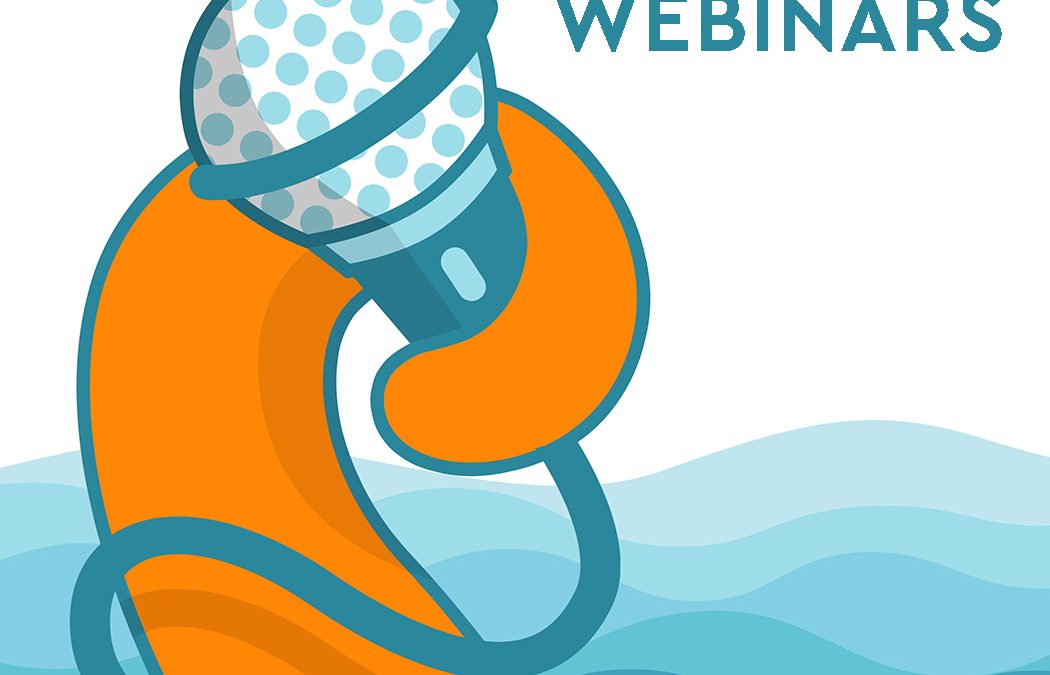
by Sarah Carr, Ph.D. | Jan 18, 2024 | Past Webinars, Webinars
This webinar originally aired on Thursday, January 18, 2024. Presented by: Chloe King of the University of Cambridge. Description: Blue carbon ecosystems, such as seagrass, capture and store high quantities of carbon dioxide and provide a range of other benefits to coastal communities by supporting fisheries, sheltering coastlines, and filtering water. Yet these ecosystems continue to be underfunded and insufficiently represented in marine management policy. Recent research explored the challenges and opportunities for valuing, financing, and managing seagrass ecosystem services through a systematic map of 56 studies and surveys and interviews with 84 conservation professionals. Results show that in both literature and in practice, monetary and biophysical ecosystem service value indicators are more prevalent than socio-cultural indicators; instrumental values prevail over intrinsic and relational values; and academic and anthropocentric knowledge systems and worldviews prevail over Indigenous, local, or ecocentric perspectives. The lack of diverse valuation approaches has led to an over-emphasis on carbon sequestration benefits, despite the infeasibility of carbon financing for small-scale seagrass projects. If seagrass conservation efforts are to succeed at scale, then a range of innovative valuation approaches will be necessary to address equity and justice concerns in enabling community-led initiatives.

by Sarah Carr, Ph.D. | Jan 17, 2024 | Past Webinars, Webinars
This webinar originally aired on Wednesday, January 17, 2024. Presented by: Francois Mosnier of Planet Tracker. Description: In many cases, overfishing occurs because fishing companies are financially incentivized to fish as much as they legally can. But what if these incentives were reversed? Planet Tracker’s award-winning ‘Blue Recovery Bond’ concept shows that paying fishing companies to fish less could be both financially and environmentally rewarding. Planet Tracker is now identifying the areas where this concept could be piloted. This webinar will explain how a Blue Recovery Bond works, how to identify a good candidate fishery, and outline the eligibility criteria Planet Tracker has developed. The audience will be invited to comment on the methodology and provide examples of areas of interest.

by Sarah Carr, Ph.D. | Jan 9, 2024 | Past Webinars, Webinars
This webinar originally aired on Wednesday, January 10, 2024. Presented by: Louise Comfort of the University of Pittsburgh and Lee Freitag of Woods Hole Oceanographic Institution. Description: Tsunamis are infrequent but terrifying hazards for coastal communities. Difficult to predict, they materialize with little warning, claiming thousands of lives and causing billions of dollars in damage. Developing countries cannot afford costly underwater cable systems, and governments and relief organizations have been forced to rely on flawed warning systems such as deep-sea buoys. Now, a groundbreaking new approach to tsunami detection and warning, which relies on low-cost underwater sensors and networks of smartphone communication, has changed the equation. Developed by an international, interdisciplinary team of researchers, this approach allows at-risk coastal communities to have an economically viable, scientifically sound means to protect themselves. Learn about the science behind this new approach in this webinar with Louise Comfort and Lee Freitag. Discover how this new sociotechnical approach could alert residents to impending tsunami threats in near-real time and how the approach could apply to all coastal cities at risk of tsunamis, sea-level rise, storm surges, and other hazards.

by Sarah Carr, Ph.D. | Dec 12, 2023 | Past Webinars, Webinars
This webinar originally aired on Tuesday, December 12, 2023. Presented by: Giulia Costa-Domingo and Rowana Walton of the UN Environment Programme World Conservation Monitoring Centre. Description: At least EUR3.35 billion, across 237 projects, has been invested in seascape restoration since 2015. The recent report Endangered Seascapes: Progress, needs and opportunities for seascape restoration by the UN Environment Programme World Conservation Monitoring Centre (UNEP-WCMC) reveals the locations, primary sources of funding, and beneficiaries of large-scale marine and coastal restoration efforts taking place around the world. It focuses on large, “seascape”-scale projects, recognising the importance of integrated approaches to the use and conservation of coastal and marine socio-ecological systems. The report synthesises the findings from a project, commissioned by Arcadia, which reviewed a non-comprehensive list of seascape restoration projects to provide a high-level overview of the state of seascape restoration that can support evidence-based restoration funding and planning. This webinar will cover the major findings from the project’s report and accompanying database which are both available online for free and contain a high-level analysis of marine restoration work undertaken from 2015-2022.

by Sarah Carr, Ph.D. | Nov 6, 2023 | Past Webinars, Webinars
This webinar originally aired on Tuesday, November 28, 2023. Presented by: Johnny Briggs and Felipe Paredes of the IUCN OECM Specialist Group. Description: Many sites – termed other effective area-based conservation measures (OECMs) – make a vital contribution to the conservation of biodiversity, even though they are not protected areas. In 2022, OECMs were included among the ways that parties could fulfill their commitment to conserve 30% of the Earth under the Kunming-Montreal Global Biodiversity Framework. To assist government officials, land managers, and conservationists, IUCN WCPA recently published a step-by-step site level tool for identifying OECMs. This tool allows an assessor to determine if a site meets the Convention on Biological Diversity definition and criteria of an OECM. For sites which do not currently meet all the criteria, the tool serves to highlight areas where further information or improvements in governance and management are required.

